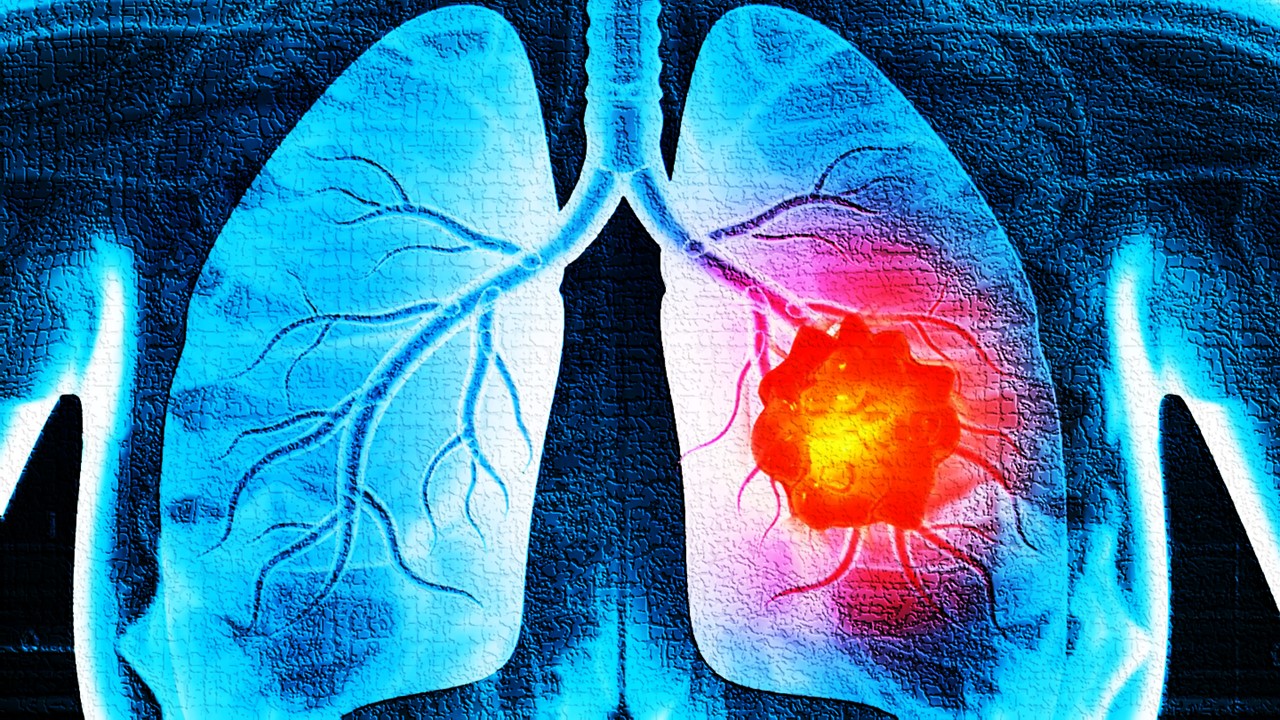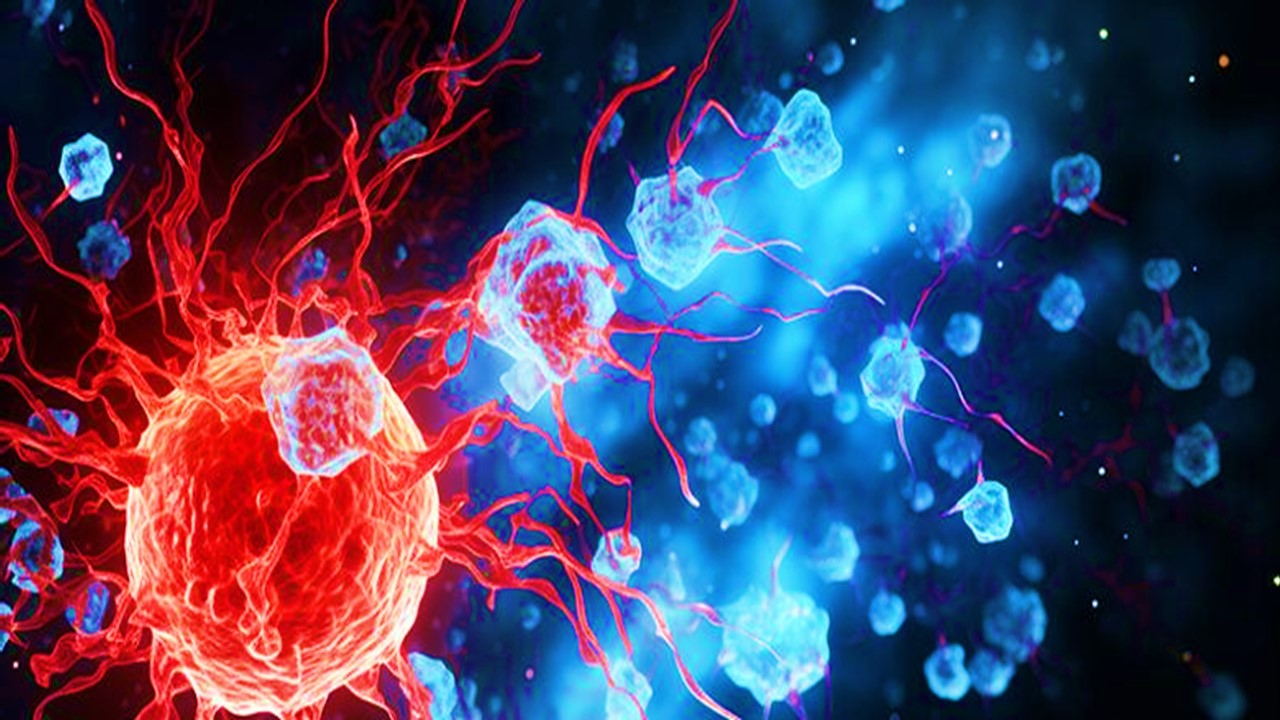Rethinking Cryogenic Drug Delivery: A Double-Network Hydrogel Approach
Advances in cryopreservation and drug delivery technologies have unveiled promising possibilities in cancer therapy. Among these, double-network (DN) hydrogels stand out as a transformative innovation. Constructed with hybrid polyacrylamide/alginate-calcium chloride (PAAm/Alg-Ca) polymers, these hydrogels demonstrate exceptional tensile strength, wet adhesion, and cold resistance, effectively addressing the limitations of conventional drug carriers. As glioblastoma (GBM) patients demand precision in therapy, DN hydrogels offer a sophisticated solution, balancing cryogenic storage and sustained drug release, particularly for lomustine, a critical anti-cancer agent.
Glioblastoma: Pathophysiology, Genetics, Prognosis, Diagnosis, and Management
Glioblastoma, also known as glioblastoma multiforme (GBM), is the most aggressive primary brain tumor in adults. It originates from astrocytes, the star-shaped glial cells that support nerve cells. The tumor is characterized by rapid growth and a tendency to infiltrate surrounding brain tissue, making complete surgical removal challenging. This aggressive behavior leads to a poor prognosis, with a median survival time of approximately 14-16 months post-diagnosis.
Genetic mutations play a significant role in the development and progression of glioblastoma. Common genetic alterations include mutations in the IDH1 and IDH2 genes, which are associated with better prognosis, and mutations in the TP53, ATRX, EGFR, PTEN, and TERT genes, which are linked to poorer outcomes. Additionally, the methylation status of the MGMT gene promoter is a critical factor; its methylation is associated with a better response to certain chemotherapies.
Diagnosing glioblastoma involves a combination of neurological examinations and imaging studies. Magnetic Resonance Imaging (MRI) is the primary imaging modality used to assess the tumor’s location and extent. Definitive diagnosis is confirmed through a biopsy, which allows for histopathological examination and molecular profiling. Early and accurate diagnosis is crucial for initiating appropriate treatment strategies.
Current management of glioblastoma is multidisciplinary, involving surgical resection to remove as much of the tumor as possible, followed by radiotherapy and chemotherapy. Temozolomide is the standard chemotherapeutic agent used in conjunction with radiotherapy. Despite these interventions, glioblastoma often recurs, and treatment options for recurrent disease are limited. Ongoing research is exploring novel therapies, including targeted treatments and immunotherapies, to improve outcomes for patients with this challenging malignancy.
Lomustine in the Management of Glioblastoma
Lomustine, also known as CCNU, is an alkylating agent from the nitrosourea class, recognized for its lipophilic properties that enable it to cross the blood-brain barrier effectively. This characteristic makes it particularly suitable for treating brain tumors, including glioblastoma. Lomustine exerts its anticancer effects by alkylating DNA and RNA, leading to cross-linking and subsequent disruption of tumor cell replication and function.
In clinical practice, lomustine is commonly administered as part of combination chemotherapy regimens. One such regimen is PCV, which includes procarbazine, lomustine, and vincristine. This combination has been utilized in the treatment of recurrent glioblastoma, aiming to enhance therapeutic efficacy. Additionally, lomustine has been combined with bevacizumab, an angiogenesis inhibitor, in efforts to improve outcomes for patients with progressive glioblastoma. However, studies have shown that while this combination may delay disease progression, it does not significantly improve overall survival and is associated with a higher incidence of adverse events.
The role of lomustine in the treatment of glioblastoma continues to be a subject of research and clinical trials. For instance, the EORTC-2227-BTG (LEGATO) trial is investigating the efficacy of combining lomustine with reirradiation therapy in patients experiencing their first progression of glioblastoma. This study aims to determine whether adding radiotherapy to lomustine chemotherapy offers additional benefits in managing recurrent disease.
Despite its established use, lomustine’s application is limited by its side effect profile, notably hematologic and pulmonary toxicities. These adverse effects necessitate careful patient selection and monitoring during treatment. Ongoing research is focused on optimizing lomustine-based therapies and exploring new combinations to enhance efficacy while minimizing toxicity in the management of glioblastoma.
Physical Chemistry of Alginates, Polyacrylamides, and Hydrogels
Alginates are naturally occurring polysaccharides derived from brown seaweed, composed of β-D-mannuronic acid (M) and α-L-guluronic acid (G) units arranged in homopolymeric (MM or GG) and heteropolymeric (MG) blocks. Their unique ability to form hydrogels arises from the ionic cross-linking between the carboxyl groups of the G blocks and multivalent cations, such as Ca²⁺. This interaction leads to the formation of an “egg-box” structure, where the cations act as bridges between alginate chains, resulting in a three-dimensional network capable of retaining large amounts of water. The gelation process is influenced by factors such as the G/M ratio, cation type and concentration, and environmental conditions like pH and temperature.
Polyacrylamides (PAAm) are synthetic polymers formed by the polymerization of acrylamide monomers. They are known for their high water absorbency and form hydrogels through covalent cross-linking, typically using agents like N,N’-methylenebisacrylamide. The degree of cross-linking significantly affects the mechanical strength and swelling behavior of PAAm hydrogels. The polymer chains’ flexibility and the hydrophilic nature of the amide groups facilitate extensive hydrogen bonding with water molecules, leading to substantial swelling and gel formation. Adjusting the cross-linker concentration and polymerization conditions allows for control over the hydrogel’s properties, making PAAm versatile for various applications.
Hydrogels are three-dimensional polymer networks capable of absorbing and retaining significant amounts of water. They can be classified based on their origin (natural or synthetic), ionic charge (neutral, anionic, cationic), and cross-linking method (physical or chemical). The swelling behavior of hydrogels is governed by the balance between the osmotic pressure driving water uptake and the elastic retractive forces of the polymer network. Factors such as polymer composition, cross-linking density, and environmental conditions (e.g., pH, temperature, ionic strength) play crucial roles in determining the swelling capacity and mechanical properties of hydrogels.
Combining alginates and polyacrylamides to form interpenetrating polymer networks (IPNs) results in hydrogels with enhanced mechanical strength and resilience. In such systems, the ionic cross-linking of alginate provides reversible, sacrificial bonds that dissipate energy under stress, while the covalently cross-linked PAAm network offers structural integrity. This dual-network structure enables the hydrogel to exhibit high toughness and self-healing properties. The synergistic interaction between the two networks allows for tunable mechanical and swelling behaviors, which can be tailored for specific applications in biomedical engineering, drug delivery, and tissue scaffolding.
The Mechanics of Resilience: Stretchable, Tough, and Adhesive
At the core of the PAAm/Alg-Ca DN hydrogel’s functionality lies its unique mechanical integrity. Hydrogels, as was previously presented are generally associated with fragility, hence, they face challenges such as breakage and deformation during storage and application. However, the DN hydrogel achieves resilience through covalent crosslinks in the polyacrylamide network and ionic crosslinks in the alginate-calcium framework. This interwoven structure not only enhances strength and toughness but also preserves elasticity at temperatures as low as −20°C.
The hybrid hydrogel’s exceptional wet adhesion properties further amplify its utility. Unlike chemically modified adhesives that risk inflammation or tissue damage, this hydrogel utilizes physical interactions such as hydrogen bonding, electrostatic forces, and ion-dipole interactions. These mechanisms ensure robust adhesion across diverse substrates—ranging from glass and metals to animal tissue—while maintaining biocompatibility. This feature is particularly valuable for localized drug delivery, as it minimizes secondary tissue damage and optimizes therapeutic outcomes.
Cryopreservation Meets Controlled Release: The Hydrogel Advantage
Cryogenic storage of lomustine, an essential therapy for glioblastoma, poses significant challenges, including the risk of drug inactivation and burst release. The PAAm/Alg-Ca DN hydrogel excels in these conditions, offering cold resistance and sustained release. Its ability to maintain flexibility and functionality at subzero temperatures arises from the presence of calcium chloride, which depresses the freezing point and enhances the hydrogel’s elasticity.
Moreover, the hydrogel’s pH-responsive swelling behavior underpins its controlled drug release. In acidic environments, such as those found in tumor tissues, the hydrogel contracts, slowing release rates. As the pH normalizes, the structure expands, enabling sustained drug diffusion. This property ensures a consistent therapeutic effect while reducing adverse reactions and toxicity associated with burst release.
Designing for Biocompatibility: A Cellular Perspective
Biocompatibility is a cornerstone for the clinical adoption of hydrogels in biomedical applications. The PAAm/Alg-Ca DN hydrogel not only meets but exceeds these requirements. Through extensive in vitro assays with human hepatocytes, the hydrogel demonstrated negligible cytotoxicity and even supported cell proliferation. Key features such as its porous architecture and elastic modulus, which mimic native tissue, facilitate nutrient exchange and cellular attachment, further promoting biocompatibility.
Additionally, live/dead staining confirmed high cell viability, underlining the hydrogel’s potential in regenerative medicine. This cytocompatibility establishes the hydrogel as an ideal carrier for not only chemotherapy drugs but also broader therapeutic applications, including tissue engineering and wound management.
Sustained Release Dynamics: Addressing Therapeutic Gaps
One of the most compelling attributes of the PAAm/Alg-Ca DN hydrogel is its ability to deliver lomustine over extended periods. Unlike traditional carriers, which often fail to maintain therapeutic levels, this hydrogel ensures a steady release profile for up to 29 days. Initial release rates are governed by surface-bound drugs, while deeper layers contribute to long-term release as the hydrogel swells. This controlled release not only enhances patient compliance but also reduces systemic side effects by maintaining localized drug concentrations.
The hydrogel’s drug-loading capacity, approximately 3% by weight, aligns with the needs of chemotherapy regimens while surpassing many existing platforms. By encapsulating lomustine at subzero temperatures, the hydrogel preserves its bioactivity, offering a robust solution to the challenges of cryopreservation.
Engineering Multi-Functionality: Beyond Cancer Therapy
While initially designed for anti-cancer applications, the versatility of the PAAm/Alg-Ca DN hydrogel suggests broader potential. Its anti-freezing properties, tissue adhesion, and pH responsiveness make it suitable for treating inflammatory and infectious diseases, including Parkinson’s, diabetes, and bacterial infections. Furthermore, its biocompatibility and mechanical resilience open avenues in soft robotics, bioelectronics, and regenerative medicine.
Future research could focus on integrating nanoparticles or growth factors into the hydrogel matrix, further expanding its utility. Additionally, scaling production while maintaining quality will be crucial for clinical and commercial success.
A Step Toward Precision Medicine
The development of the PAAm/Alg-Ca DN hydrogel represents a paradigm shift in drug delivery and cryopreservation. By combining advanced material science with biomedical engineering, researchers have created a platform that not only overcomes the limitations of traditional hydrogels but also sets a new standard for multifunctionality and efficiency. As this technology progresses toward clinical implementation, it holds the promise of revolutionizing cancer therapy and beyond, aligning with the goals of precision medicine and patient-centric care.
Study DOI: https://doi.org/10.1016/j.smaim.2021.07.005
Engr. Dex Marco Tiu Guibelondo, B.Sc. Pharm, R.Ph., B.Sc. CpE
Editor-in-Chief, PharmaFEATURES

Subscribe
to get our
LATEST NEWS
Related Posts

Immunology & Oncology
The Silent Guardian: How GAS1 Shapes the Landscape of Metastatic Melanoma
GAS1’s discovery represents a beacon of hope in the fight against metastatic disease.

Immunology & Oncology
Resistance Mechanisms Unveiled: The Role of Glutathione S-Transferase in Cancer Therapy Failures
Understanding this dual role of GSTs as both protectors and accomplices to malignancies is central to tackling drug resistance.
Read More Articles
Myosin’s Molecular Toggle: How Dimerization of the Globular Tail Domain Controls the Motor Function of Myo5a
Myo5a exists in either an inhibited, triangulated rest or an extended, motile activation, each conformation dictated by the interplay between the GTD and its surroundings.
Designing Better Sugar Stoppers: Engineering Selective α-Glucosidase Inhibitors via Fragment-Based Dynamic Chemistry
One of the most pressing challenges in anti-diabetic therapy is reducing the unpleasant and often debilitating gastrointestinal side effects that accompany α-amylase inhibition.













